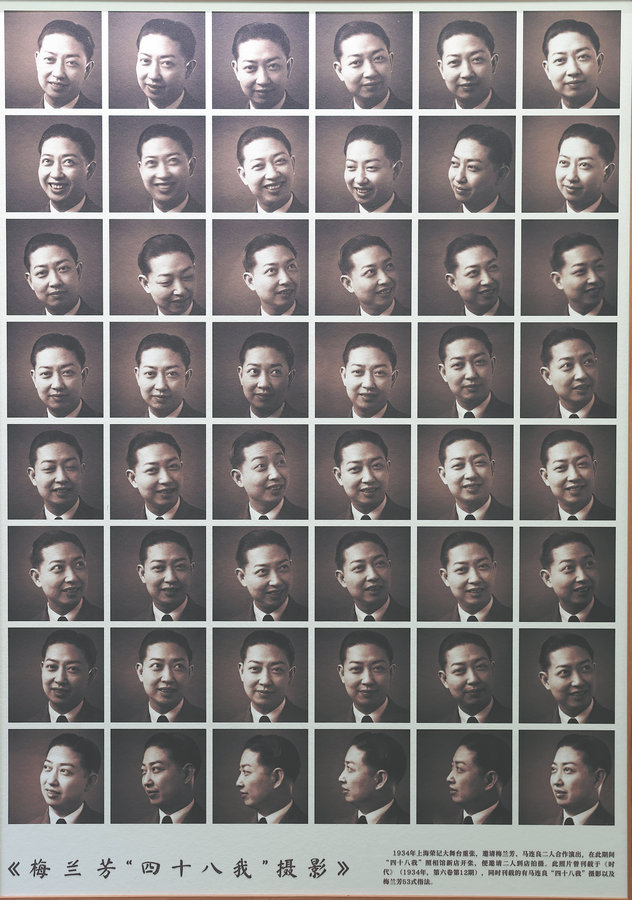

Born into a family of Peking Opera artists in 1894, Mei began studying the art at age 8, making his stage debut at 11.
He specialized in performing nandan roles — men playing female characters — a practice forged in feudal times when women were forbidden to take to the stage. Nandan's heyday was in the first half of the 20th century when Mei Lanfang, Shang Xiaoyun (1900-76), Cheng Yanqiu (1904-58) and Xun Huisheng (1900-68) — dubbed the Four Great Dan — established the four schools of female role styles named Mei, Shang, Cheng and Xun.
The courtyard's east and west side rooms are dedicated to themed displays — On Stage: Iconic Roles and Behind the Scenes: Artistic Life. These sections explore Mei's vibrant stage persona and life beyond the curtain, highlighting the seamless interplay between his public performances and personal creativity.
One of the most eye-catching items is a wall displaying 48 photos of Mei's facial expressions and 53 photos of Mei's hand gestures taken in 1934 in Shanghai. Facial expressions and hand gestures are fundamental to Peking Opera, as they are critical to conveying the emotional depth, character traits and narrative elements of the performance. The performers use these visual cues to communicate meaning, especially since the performances often feature minimalistic sets and props.
There is also a newly opened exhibition space hosting the art exhibition Mei's Garden of Ink, which showcases 34 pieces of Mei's own paintings and calligraphy, as well as works from his personal art collection. These exhibits emphasize Mei's innovative fusion of Peking Opera and visual arts, exemplifying his philosophy of "mutual inspiration between theater and painting".